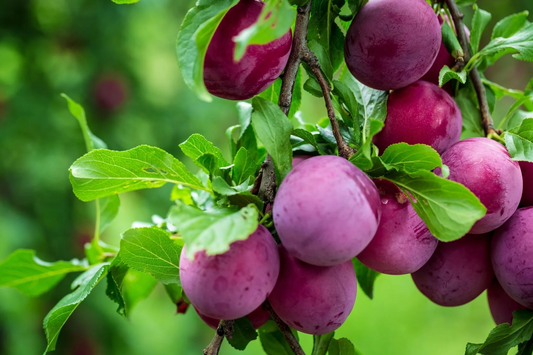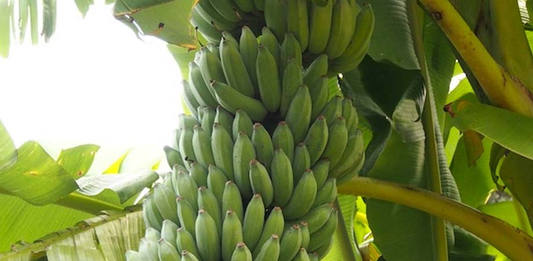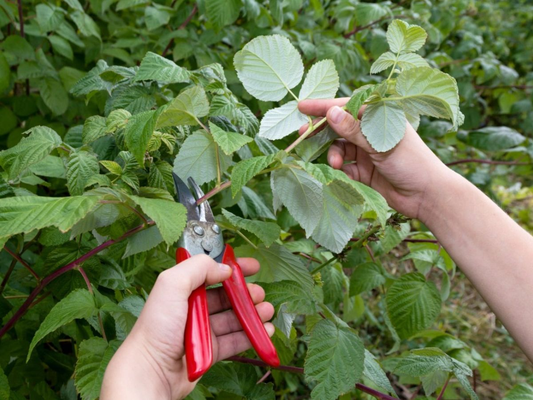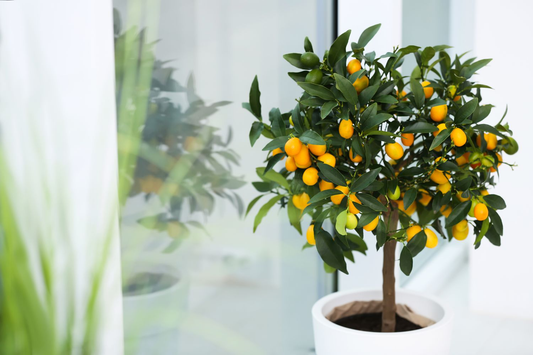How to Grow Carrots in Containers – Your Guide to Fresh, Homegrown Produce!
Share
Table of Contents
1. Introduction: Why Grow Carrots in Containers?
Container gardening is gaining popularity due to its numerous benefits, especially for those with limited space. Whether you're living in a small apartment, a bustling city, or simply want to grow your own fresh produce, growing carrots in containers offers a practical solution. In this section, we’ll explore the key advantages of container gardening and why carrots are an ideal crop for this method.
1.1. Overview of Container Gardening Benefits
- Space-saving: Container gardening allows you to make the most of small or unused spaces such as balconies, patios, or even windowsills.
- Control over Growing Conditions: Containers give you complete control over the soil, water, and light conditions, leading to healthier plants.
- Ideal for Small Spaces or Urban Environments: If you're in a city or a small apartment, container gardening is the perfect way to grow your own food without needing a large backyard.
1.2. Why Carrots are Perfect for Containers
- Easy to Grow: Carrots are simple to grow and don't require much attention once planted. They're an excellent choice for both beginner and experienced gardeners.
- Versatile and Productive: Carrots come in various varieties, allowing you to grow them in different container sizes and types. They’re known for their high yield, even in limited space.
- Great for Beginner Gardeners: If you're new to gardening, carrots are forgiving and grow relatively easily compared to other vegetables. They provide a satisfying harvest with minimal effort.
In the next sections, we'll dive deeper into selecting the right containers, soil, and care techniques for growing carrots in containers, ensuring you have all the information to start your own container garden successfully.

2. Choosing the Right Container for Carrots
Choosing the right container is essential for growing healthy and productive carrots. Carrots need sufficient space to develop their roots properly. In this section, we’ll discuss the key considerations for selecting the ideal container for your carrot plants.
2.1. Size Considerations for Carrot Containers
- Minimum Depth and Width: Carrots require a container with a minimum depth of 12-18 inches to allow their roots to grow deep and straight. If the container is too shallow, the carrots may become stunted or grow deformed.
- Optimal Growth Space: A wider container (at least 12 inches across) is necessary to give each carrot enough space to grow without overcrowding. The more space available, the better the yield and root development.
2.2. Best Materials for Carrot Containers
-
Plastic:
- Pros: Lightweight, affordable, and available in various sizes.
- Cons: Can retain too much moisture and may heat up quickly in direct sunlight, potentially damaging roots.
-
Wood:
- Pros: A natural material that provides excellent drainage and temperature control.
- Cons: Heavier, can decay over time, and requires more maintenance (e.g., sealing or painting to prevent rot).
-
Terracotta:
- Pros: Attractive, provides excellent drainage, and helps regulate soil temperature.
- Cons: Heavy, can dry out quickly in hot weather, and can crack in freezing temperatures.
-
Fabric:
- Pros: Lightweight, allows for good drainage, and prevents root circling by air-pruning the roots.
- Cons: May require more frequent watering as it dries out quicker than other materials.
2.3. Drainage Needs
- Importance of Proper Drainage Holes: Drainage is critical to prevent water from accumulating in the container, which can lead to root rot. Always ensure that your container has sufficient drainage holes at the bottom.
- How to Ensure Good Water Flow in Containers: You can enhance drainage by adding a layer of rocks or gravel at the bottom of the container before adding soil. This helps improve water flow and prevents the soil from becoming too compacted.
3. Selecting the Best Carrot Varieties for Containers
When growing carrots in containers, selecting the right variety is crucial for successful harvests. Carrots come in many shapes and sizes, and some varieties are better suited for container gardening than others. In this section, we’ll explore the best carrot varieties for containers and why choosing the right type can impact your success.
3.1. Top Carrot Varieties Suited for Containers
-
Shorter Varieties: Carrots that grow in a compact form are ideal for containers. These varieties do not need as much space for root expansion and can thrive in smaller containers.
- 'Paris Market': A small, round carrot that grows in a compact, almost ball-shaped form. Perfect for shallow containers.
- 'Thumbelina': A tiny, round carrot that is perfect for container gardening due to its bite-sized growth.
- 'Chantenay': A conical variety with a medium size, making it perfect for slightly larger containers.
-
Types of Carrots to Avoid: Some larger carrot varieties require deep soil for their long taproots, making them unsuitable for containers.
- ‘Nantes’ and ‘Imperator’ varieties: These carrots grow long and slender roots that are difficult to accommodate in shallow containers, making them less ideal for container gardening.
3.2. Why Variety Matters for Container Success
- Root Size: Carrots with compact or short roots are better suited for the confined space of a container, while larger varieties need more space to grow properly.
- Growth Habits: Some carrot varieties grow in a rounded shape, making them more adaptable to smaller containers, while others grow longer or more elongated, requiring deeper containers.
- Container Space: The available space in your container plays a key role in the success of your carrot crop. Opting for varieties that are smaller or compact ensures that they can thrive in smaller pots with limited space.
3.3. Table: Best Carrot Varieties for Containers
| Variety Name | Root Size | Growth Habit | Best Container Size |
|---|---|---|---|
| Paris Market | Small | Rounded, compact | 12-14 inches deep |
| Thumbelina | Small | Round, bite-sized | 12 inches deep |
| Chantenay | Medium | Conical, robust | 14-18 inches deep |
Choosing the right variety ensures that your carrots will have the space and conditions they need to grow healthy and productive. In the next section, we’ll look at preparing the soil and planting your carrots to get the best results.

4. Preparing the Container and Soil for Carrots
To grow healthy, flavorful carrots in containers, proper soil preparation is essential. Carrots thrive in loose, well-draining soil that allows their roots to expand and develop fully. In this section, we’ll guide you through the necessary soil requirements, how to prepare your container, and the importance of pH levels and fertilization.
4.1. Soil Requirements for Carrots
-
Loose, Well-Draining, and Nutrient-Rich Soil:
- Carrots need soil that is loose and free from large clumps or compacted areas to allow for healthy root development.
- Well-draining soil ensures that excess water does not pool around the roots, preventing rot.
- A nutrient-rich mixture will support carrot growth, but avoid heavy or rich soils that can cause carrots to grow forked or deformed roots.
-
Importance of Soil Texture:
- Sand: Sand helps improve soil drainage, making it perfect for carrots that need well-drained conditions.
- Compost: Adding compost to the soil provides essential nutrients and improves soil structure, ensuring optimal growth conditions for your carrots.
4.2. Preparing the Container for Planting
-
Adding Drainage Material at the Bottom of the Container:
- To improve drainage, place a layer of rocks, gravel, or broken pottery at the bottom of the container. This helps prevent water from accumulating at the bottom and ensures better airflow around the roots.
-
Mixing Soil for Optimal Growth:
- Combine your soil with compost and sand in a 2:1:1 ratio (2 parts soil, 1 part compost, 1 part sand) to ensure the mix is light and airy for carrot roots to grow properly.
- You can also use a pre-mixed potting soil blend designed for vegetables that includes peat moss and perlite for better aeration.
4.3. pH Levels and Fertilization Needs
-
Ideal pH Range for Carrots:
- The ideal pH range for carrots is between 6.0 and 6.8. Soil that is too acidic or too alkaline can negatively affect root development and nutrient absorption.
- You can test your soil's pH using a soil testing kit and adjust it with pH-altering amendments if necessary (e.g., lime to raise pH or sulfur to lower it).
-
Organic Fertilizer Options and How to Incorporate Them:
- Compost: A slow-release source of nutrients that improves soil structure and provides a balanced range of essential minerals.
- Fish Emulsion or Seaweed Extract: Rich in nitrogen, phosphorus, and potassium, which are essential for healthy carrot growth.
- Bone Meal: A good option for providing phosphorus, which encourages root growth.
- Mix the organic fertilizer into the soil before planting, following the recommended dosage on the product label to avoid over-fertilization.
5. Planting Carrots in Containers: Step-by-Step Guide
Planting carrots in containers is a simple and rewarding process. With the right timing and techniques, you can grow a successful crop of carrots in your containers. In this section, we’ll walk you through the best times to plant, the methods for sowing seeds, and how to ensure optimal depth and coverage for your carrot seeds.
5.1. When to Plant Carrots
-
Best Planting Time Based on Climate Zones:
- Carrots are a cool-season crop, so the best time to plant them depends on your local climate. In general, plant carrots early in the spring, as soon as the soil can be worked.
- In colder climates, sow seeds about 2-4 weeks before the last expected frost date. In warmer climates, you can plant carrots in late fall or winter to avoid the hottest summer months.
-
Seasonal Considerations for Different Regions:
- Cold Climates: In USDA hardiness zones 3-5, plant carrots in early spring and again in late summer for a fall harvest.
- Temperate Climates: In zones 6-8, you can plant carrots both in the spring and fall for continuous harvests.
- Warm Climates: In zones 9-10, plant carrots in late fall or winter when temperatures are milder.
5.2. Planting Techniques
-
Direct Sowing vs. Transplanting:
- Carrots are best grown from seed, as transplanting can disturb their delicate roots, leading to deformities.
- Direct sowing in containers is the most effective method to ensure uniform and healthy carrot growth.
-
Proper Spacing Between Seeds:
- Space carrot seeds about 2-3 inches apart. This allows for proper root development and reduces overcrowding.
- Thin seedlings once they start to sprout to maintain this spacing. You can use the thinned seedlings in salads or soups.
5.3. Planting Depth and Seed Coverage
-
How Deep to Plant Seeds:
- Plant carrot seeds about 1/4 to 1/2 inch deep. Carrots have small seeds, and planting them too deep can prevent germination.
- For best results, gently press the seeds into the soil using your fingers or a flat tool to ensure good seed-to-soil contact.
-
Ensuring Proper Soil Coverage for Germination:
- Cover the seeds lightly with soil to keep them moist during germination. Carrot seeds need consistent moisture to sprout, so keep the soil damp, but not soggy.
- If necessary, use a fine mist to water the seeds, avoiding heavy watering that can wash the seeds away.

6. Watering and Caring for Carrots in Containers
Proper care and attention to watering are essential for growing healthy carrots in containers. In this section, we will cover the watering needs of container-grown carrots, how to manage overwatering and underwatering, and important temperature considerations for optimal growth.
6.1. Watering Needs of Container-Grown Carrots
-
How Often to Water:
- Carrots need consistently moist soil to grow well, but the soil should never be soggy. Water when the top inch of soil feels dry.
- On average, container-grown carrots need watering every 2-3 days, but this depends on the weather and the size of the container.
- Check the moisture level regularly to ensure the soil stays evenly moist, but not soaked. Overly wet soil can lead to root rot.
-
Watering Tips for Containers:
- Avoid overhead watering, as it can disturb the fine soil surface and wash away seeds or seedlings.
- Instead, use a watering can with a gentle spout or a drip irrigation system to ensure water reaches the base of the container and doesn't splash onto the leaves.
- Water at the base of the plant to encourage deep root growth, which helps carrots develop strong, healthy roots.
6.2. Dealing with Overwatering and Underwatering
-
Signs of Overwatering:
- Yellowing leaves and wilting, even when the soil is wet, are signs that carrots may be receiving too much water.
- Excessive moisture can also cause the soil to become compacted, restricting root growth.
- In severe cases, root rot may develop, causing the roots to decay and emit a foul odor.
-
Signs of Underwatering:
- Wilting leaves and dry soil are indicators that your carrots are not getting enough water.
- Underwatered carrots may also develop stunted growth, with smaller, tougher roots.
- If the soil becomes too dry, it can also cause the roots to crack and split.
6.3. Temperature Considerations
-
Ideal Temperature Range for Carrots:
- Carrots grow best in temperatures between 55-75°F (13-24°C). This range allows for optimal germination and root development.
- Extreme temperatures can stress the plant, leading to poor growth or bolting (when the plant sends up a flower stalk prematurely).
-
Using Shade or Protection for Extreme Weather:
- In hot climates or during heatwaves, provide some afternoon shade to protect your carrots from excessive heat. You can use shade cloth or place the container in a spot with partial sunlight.
- In cold climates, ensure your carrots are shielded from frost or freezing temperatures. You can move containers to a more sheltered location or cover them with a frost blanket during cold nights.
7. Thinning and Maintaining Healthy Growth
Thinning and proper maintenance are essential for growing healthy carrots in containers. In this section, we will explore when and how to thin carrot seedlings, how to maintain healthy growth through pruning, and how to address common issues that may arise in container gardening.
7.1. When and How to Thin Carrot Seedlings
-
Why Thinning is Important for Root Development:
- Thinning allows carrots to have enough space to develop long, healthy roots without competing for nutrients and water.
- Proper spacing also promotes better airflow, reducing the risk of diseases and encouraging strong root growth.
-
Steps for Proper Thinning:
- Once your carrot seedlings are about 1-2 inches tall, it's time to begin thinning.
- Thin the seedlings by gently pulling up the weaker ones, leaving the strongest plants spaced about 3-4 inches apart.
- Be careful not to disturb the remaining seedlings' roots while thinning, as this can damage the plants.
- Thin gradually to avoid shocking the plants; you can thin them in stages to leave enough space as they grow.
7.2. Pruning and Supporting Carrot Growth
-
How to Prune Excess Foliage and Prevent Crowding:
- Prune any excess foliage that could block sunlight or hinder airflow between plants.
- Remove any damaged or diseased leaves to keep the plant healthy and reduce the risk of pests.
- If the carrot tops begin to crowd, you can carefully trim them back to ensure that each plant has enough space for healthy growth.
7.3. Dealing with Common Issues in Container Gardening
-
Stunted Growth:
- If your carrots show signs of stunted growth, check that the container is deep enough and that the soil is loose and well-draining.
- Overcrowding or lack of nutrients can also lead to stunted growth, so ensure proper thinning and regular fertilization.
-
Yellowing Leaves:
- Yellowing leaves can be a sign of nutrient deficiency or overwatering. Make sure you're providing enough nutrients and avoid letting the soil stay too soggy.
- If it's a nitrogen deficiency, consider adding a balanced fertilizer or organic compost to improve the soil’s nutrient content.
-
Pests:
- Common pests like aphids, carrot flies, or root maggots can affect carrots. To prevent infestations, keep an eye on your plants and remove any pests manually.
- You can also use organic pest control methods such as neem oil or insecticidal soap to keep the pests at bay.

8. Fertilizing Carrots in Containers for Maximum Yield
Fertilizing your container-grown carrots correctly is essential for encouraging healthy growth and maximizing yield. In this section, we will cover the nutrient requirements for carrots during different growth stages, the best organic fertilizers to use, and how to identify and correct nutrient deficiencies.
8.1. Nutrient Requirements During Different Growth Stages
-
Early Growth vs. Root Formation:
- During the early stages of growth, carrots need a balanced supply of nitrogen to encourage strong foliage and healthy seedlings.
- As the plants start to form roots, phosphorus and potassium are essential for root development and strengthening the plant.
- Switch to a lower-nitrogen fertilizer when the roots begin to form to promote better root growth rather than excessive leaf production.
8.2. Organic Fertilizers and Compost Options
-
Using Balanced Fertilizers (e.g., 10-10-10):
- A balanced fertilizer, like 10-10-10, provides an equal mix of nitrogen, phosphorus, and potassium, supporting the overall health of your carrots.
- Apply a small amount of balanced fertilizer during planting and again after thinning to boost early growth.
-
Top-Dressing with Compost or Worm Castings:
- Top-dressing with compost or worm castings can improve soil fertility and structure while providing essential micronutrients.
- Apply a thin layer of compost around the base of the plants every few weeks to maintain nutrient availability.
8.3. Signs of Nutrient Deficiencies
-
How to Identify and Correct Common Deficiencies:
-
Nitrogen Deficiency:
- Signs: Yellowing leaves, slow growth, and small carrots.
- Solution: Apply a balanced nitrogen fertilizer or organic nitrogen source like composted manure.
-
Potassium Deficiency:
- Signs: Leaf edges turning brown, weak root development.
- Solution: Apply a potassium-rich fertilizer like kelp meal or wood ash to improve root health and disease resistance.
-
Nitrogen Deficiency:
9. Common Problems and How to Prevent Them
Growing carrots in containers can be a rewarding experience, but like any gardening endeavor, it comes with its share of challenges. From pests to diseases and growth issues, it's important to recognize problems early and take preventive measures. In this section, we will cover common problems faced by container carrot growers and how to prevent and address them effectively.
9.1. Pests and Diseases Affecting Container Carrots
-
Aphids:
- Aphids are small, sap-sucking insects that can weaken your carrot plants and spread diseases.
- Look for curled or yellowed leaves as signs of aphid infestation.
-
Carrot Rust Fly:
- The carrot rust fly lays its eggs in the soil, and the larvae can damage carrot roots, causing them to rot.
- Signs of an infestation include browning, wilting, and decaying roots.
-
Fungal Diseases:
- Fungal diseases like Alternaria leaf spot and powdery mildew can affect carrots, causing discolored or spotted leaves and stunted growth.
- These diseases thrive in wet, humid conditions and can spread quickly if left untreated.
9.2. Preventive Measures
-
Organic Pest Control Methods:
- Neem Oil: A natural pesticide that can help control aphids and other pests without harming beneficial insects.
- Insecticidal Soap: Effective against aphids, spider mites, and other soft-bodied insects.
-
Using Row Covers and Mulches to Protect Carrots:
- Row covers can help keep pests like the carrot rust fly away from your plants while allowing air and light to reach them.
- Mulching around the base of the plant helps retain moisture and prevent soil-borne diseases from splashing onto the foliage.
9.3. Solving Issues with Carrot Growth
-
Dealing with Small, Misshapen Roots:
- Carrots grown in containers can sometimes produce small or misshapen roots due to overcrowding or poor soil conditions.
- Ensure proper spacing between seeds and provide a deep, well-draining container for root development.
-
How to Improve Growing Conditions for Better Carrots:
- Use loose, well-draining soil to allow for proper root expansion.
- Ensure your container is deep enough (12–18 inches) to accommodate the carrot's root length.
- Regularly check the moisture level in the container to prevent waterlogging, which can cause root rot.

10. Harvesting Your Carrots and Storing the Bounty
After weeks of careful growing, it’s time to reap the rewards of your hard work! Harvesting carrots from containers can be an exciting and rewarding experience. In this section, we’ll discuss how to tell when your carrots are ready for harvest, how to remove them gently without causing damage, and the best ways to store and preserve them for future enjoyment.
10.1. When to Harvest Carrots from Containers
-
Signs Your Carrots Are Ready for Harvest:
- Carrots typically take around 60-80 days to reach maturity, depending on the variety.
- Check the size of the roots—if they’ve reached a decent size (usually 1-2 inches in diameter), they are likely ready to harvest.
- The foliage of the carrot plant can also be a good indicator—yellowing or wilting leaves suggest that the plant is nearing the end of its growth cycle.
- For shorter varieties, the carrots should be approximately 3-4 inches long, while longer varieties may require more time to grow larger roots.
10.2. How to Harvest Carrots Without Damaging the Roots
-
Gently Removing Carrots from Containers:
- Carefully pull up the carrots by grasping the foliage and pulling them out of the soil gently.
- If you’re having trouble removing them, use a small garden fork to loosen the soil around the roots before pulling them out.
-
Avoiding Root Breakage and Handling Tips:
- Be cautious not to break the carrot roots while pulling them from the soil, as damaged roots won’t store well.
- Use a soft grip on the leaves to prevent snapping them off too early, and avoid pulling too forcefully on smaller carrots.
10.3. Storing and Preserving Harvested Carrots
-
How to Store Freshly Harvested Carrots:
- Store carrots in a cool, dry, and dark place (e.g., a root cellar, basement, or refrigerator).
- Remove the greens from the tops to prevent them from drawing moisture from the roots and causing them to shrivel.
- Carrots can last for several weeks when properly stored in a plastic bag or container in the fridge.
-
Freezing and Preserving Methods:
- If you want to preserve your carrots for a longer period, freezing is an excellent option.
- To freeze carrots, first wash and peel them, then blanch them in boiling water for a few minutes before freezing in airtight containers or freezer bags.
- Carrots can last for several months in the freezer if properly stored.
11. Conclusion: Growing Carrots in Containers Made Easy
Growing carrots in containers is a simple and rewarding process that allows you to enjoy fresh, homegrown produce even in small spaces. By selecting the right container, choosing suitable carrot varieties, and following the proper planting, care, and harvesting techniques, you can successfully grow carrots that thrive in containers.
11.1. Recap of Key Points
- Selecting the Right Container and Variety: Ensure your container is large enough and has good drainage. Choose shorter carrot varieties like 'Paris Market' or 'Thumbelina' for best results in containers.
- Planting, Caring, and Harvesting Tips: Proper watering, thinning, and timely harvesting will help ensure your carrots grow to their full potential. Keep an eye on pests and nutrient needs throughout the growing season.
11.2. Encouragement for Gardeners of All Experience Levels
Whether you're a seasoned gardener or just starting out, growing carrots in containers is an accessible and fun way to engage with gardening. With minimal space requirements and a little patience, you'll be rewarded with a bountiful harvest.
11.3.Action
We encourage you to give container carrot gardening a try! It’s a great way to grow your own fresh vegetables, even in urban environments. Share your gardening results and experiences with us—we’d love to hear about your success!
12. FAQ – Frequently Asked Questions
Here are answers to some of the most common questions about growing carrots in containers:
1. Can I grow carrots in a small container?
Yes, you can grow carrots in smaller containers, but it’s important to choose the right variety. Look for short or compact varieties like 'Paris Market' or 'Thumbelina,' which are ideal for smaller spaces.
2. How deep should my container be for growing carrots?
The container should be at least 12-18 inches deep to allow for healthy root development. Shallow containers may result in stunted or misshapen carrots.
3. Why are my container-grown carrots not growing straight?
Carrots may grow crooked if they are crowded or if the soil is too compacted. Ensure proper spacing between seeds and use loose, well-draining soil to encourage straight growth.
4. Can I use regular potting soil for growing carrots?
Regular potting soil is not ideal for carrots. Carrots need loose, sandy, and well-draining soil to grow properly. You can amend potting soil with sand and compost to improve its texture.
5. How do I know when my container carrots are ready to harvest?
Carrots are ready to harvest when they reach a desired size, typically indicated by their root size and the condition of their foliage. Gently pull one to check its size.
6. What is the best time of year to start growing carrots in containers?
The best time to plant carrots in containers is in early spring or late summer, depending on your climate. Carrots prefer cooler temperatures (55-75°F) for optimal growth.
Additional Resources
How to Care for Indoor Plants During Summer: Avoid These Common Mistak – XRoci
Grow Delicious Fruits in Small Spaces: Buy Dwarf Fruit Trees Online To – XRoci
How to Start a Community Garden: Make Your Town More Beautiful and Sus – XRoci




